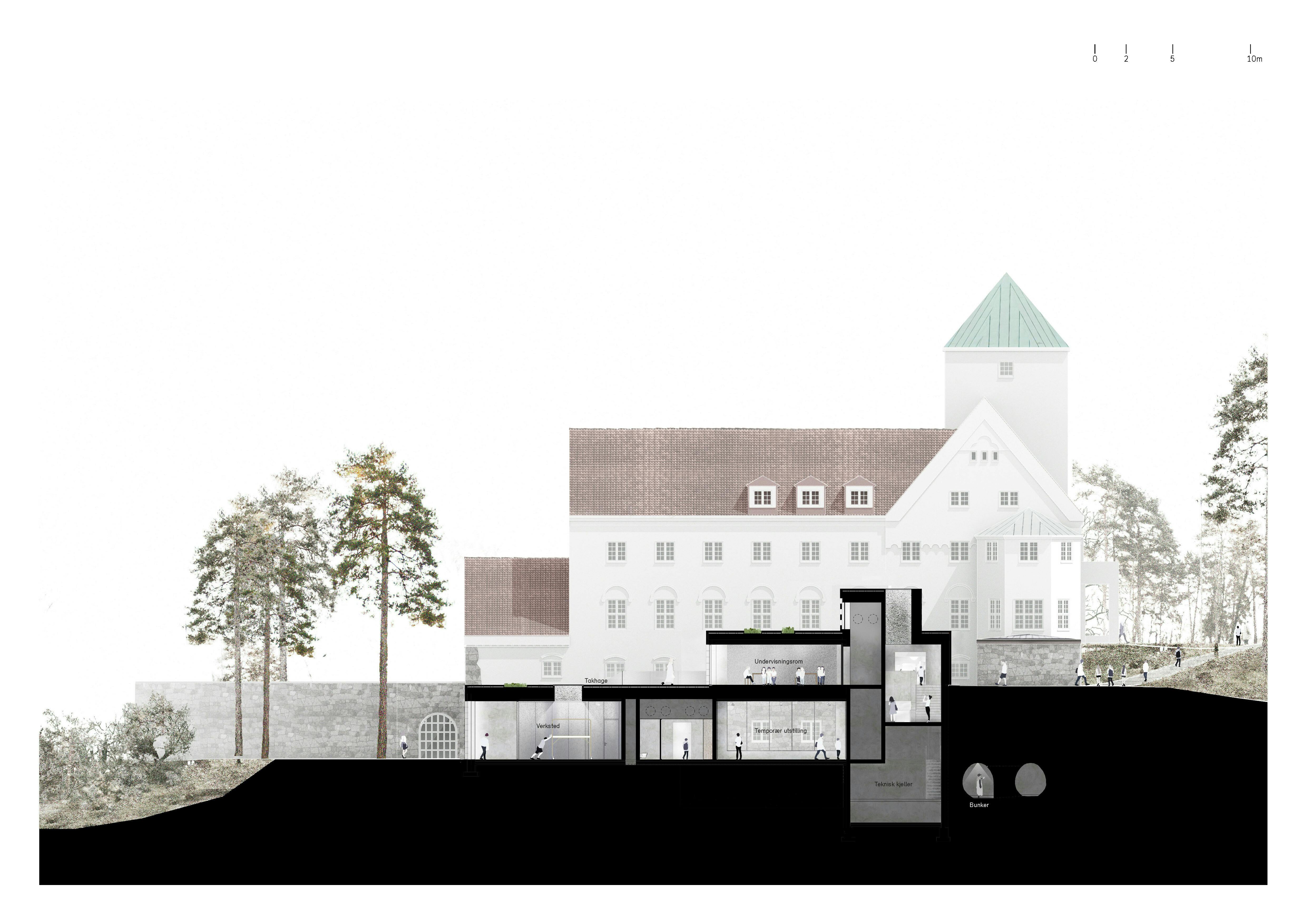Norwegian Holocaust Center
Oslo
Villa Grande has a turbulent history. Most affected is the villa by its notorious inmate during the occupation period leaving imprints of paranoia and nazi philosophy on the architecture. The villa’s narrow, somewhat claustrophobic exhibition rooms are fitting as frameworks for exhibiting one of humankind’s worst traumas. As a counterweight to this world of heavy architectural symbolism, the extension should give a new spatial dimension to the complex. Our proposal will expand the current exhibition and create a subtle framework for new narratives for minority groups in the world. By cultivating the edge of the “castle plateau” with a low-key composition of volumes and openings, we create a new movement through history and landscape.
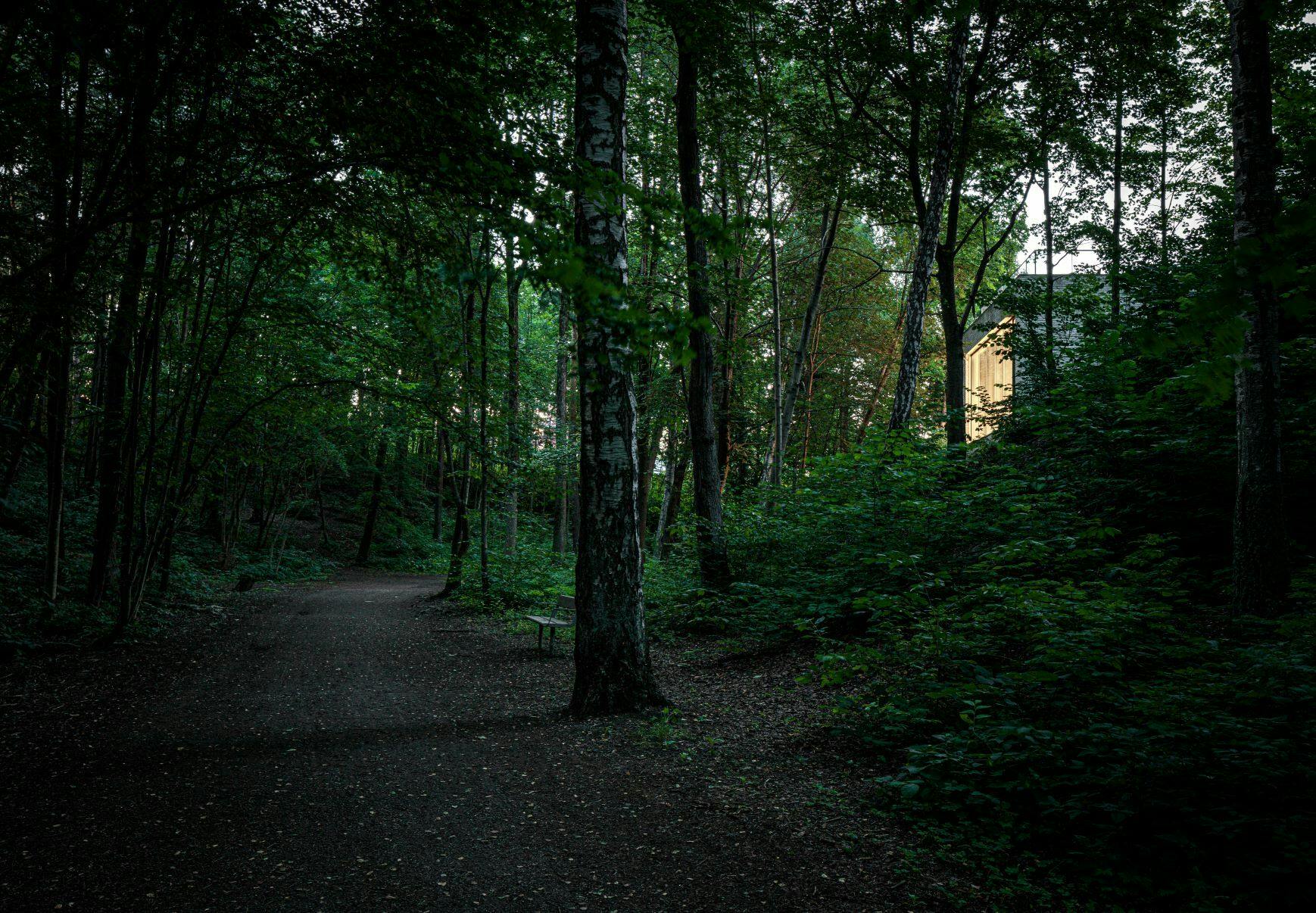
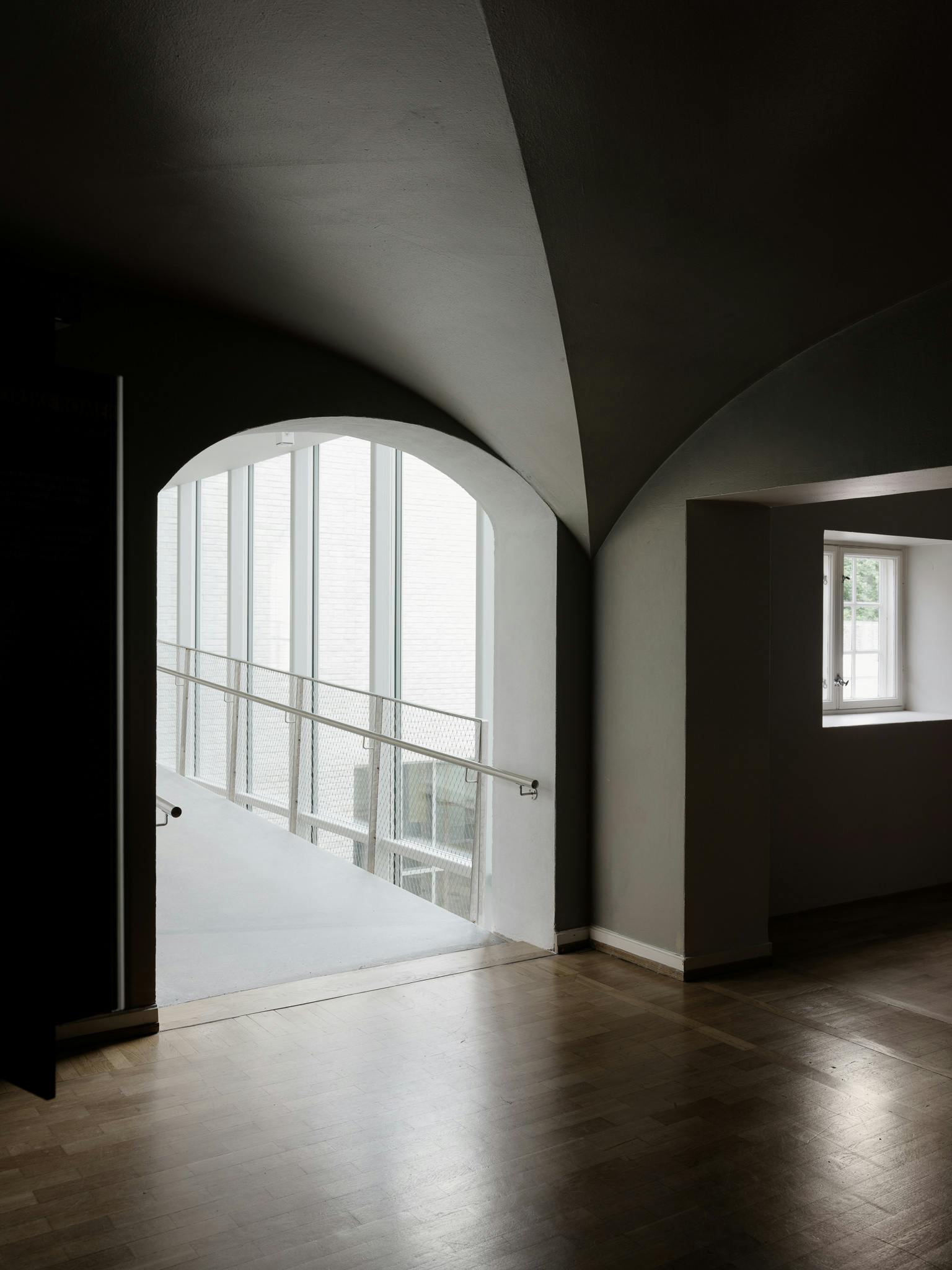
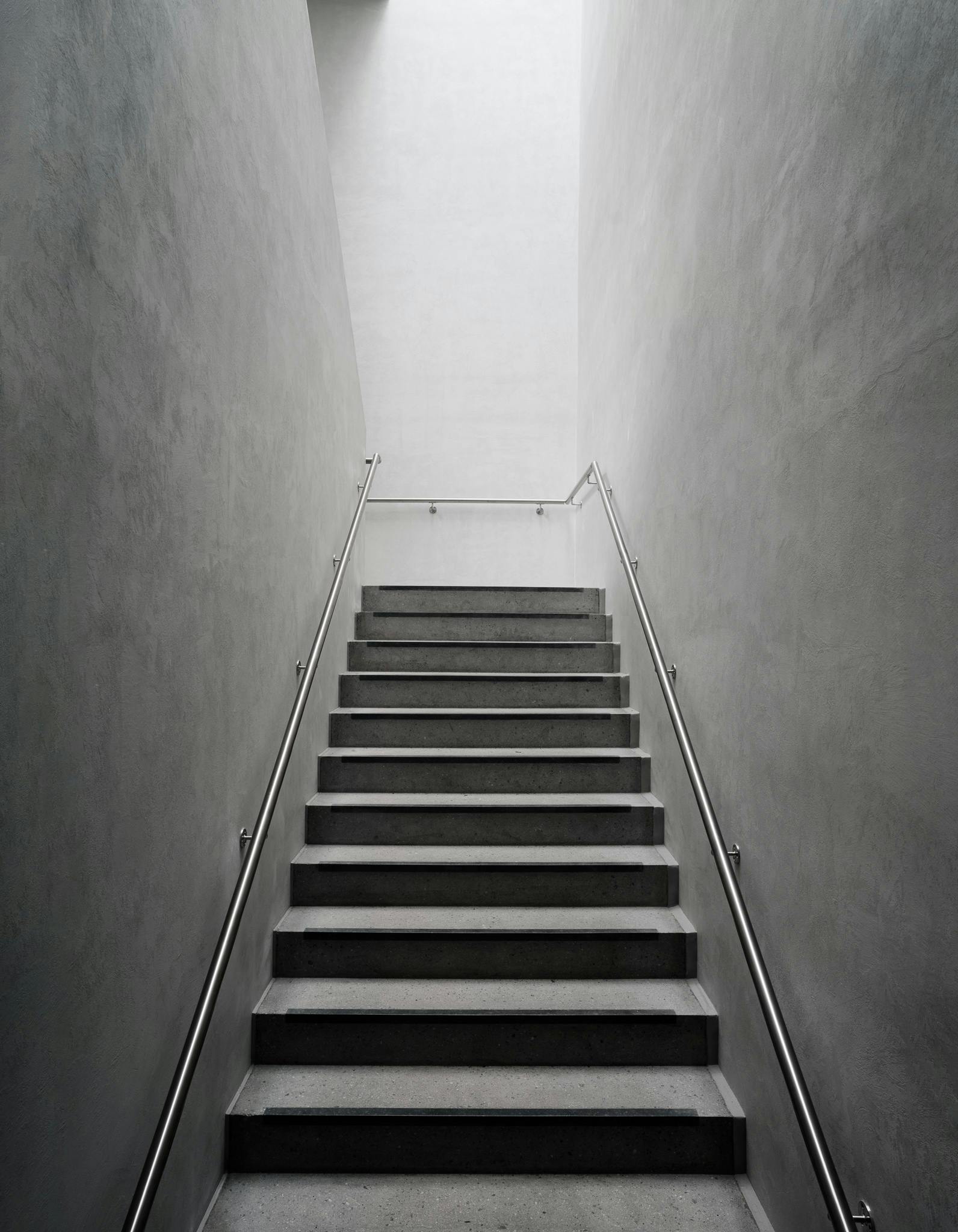
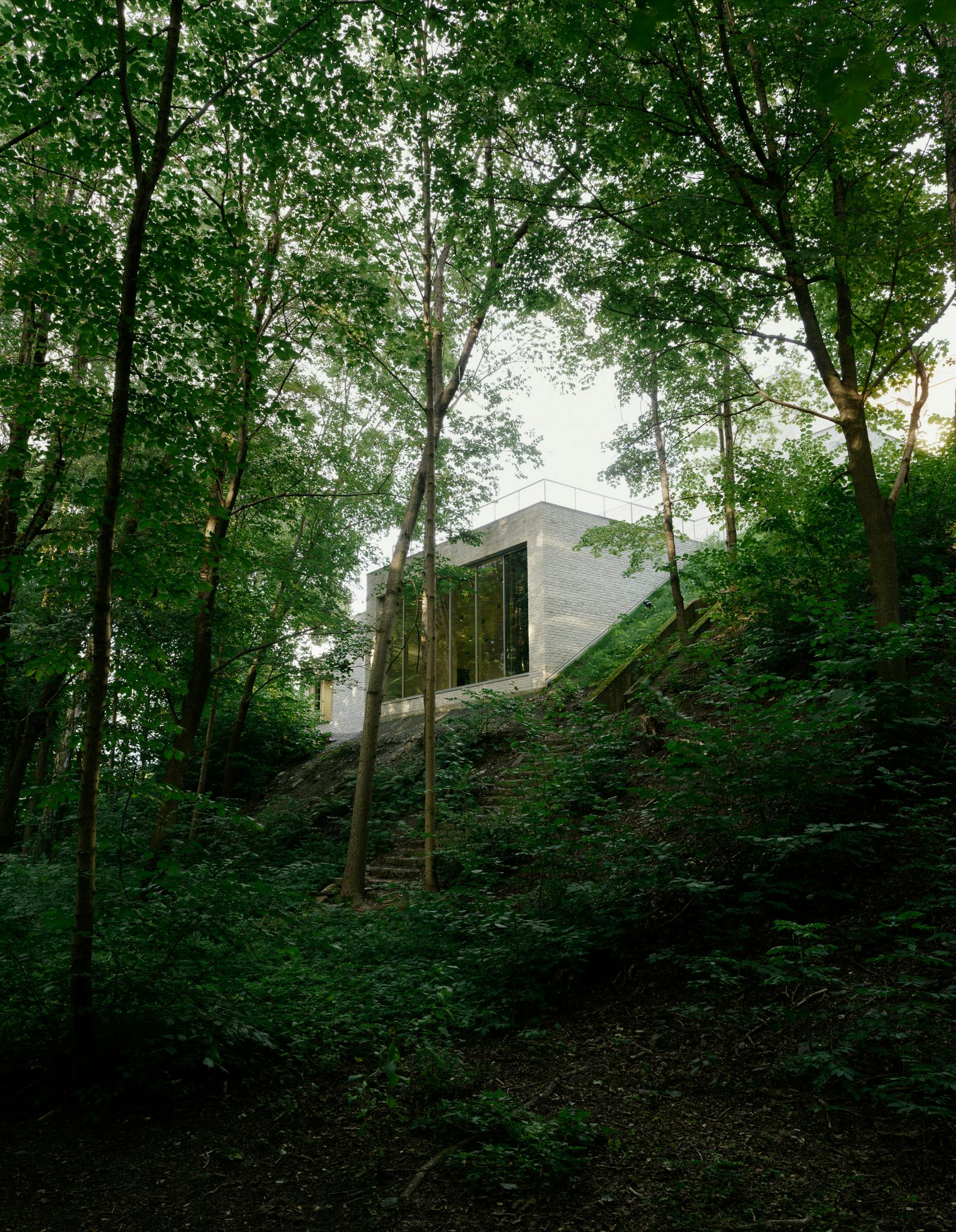
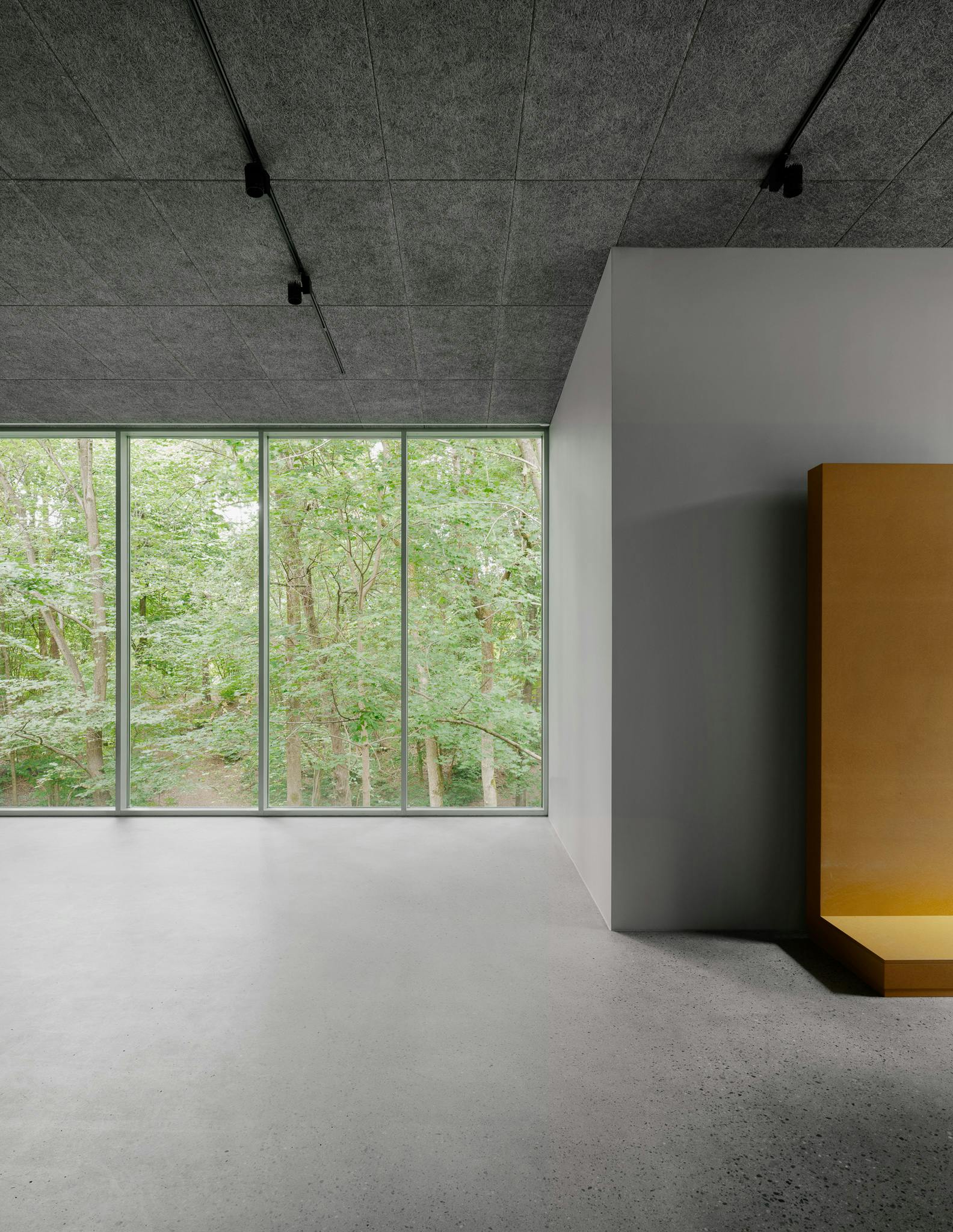
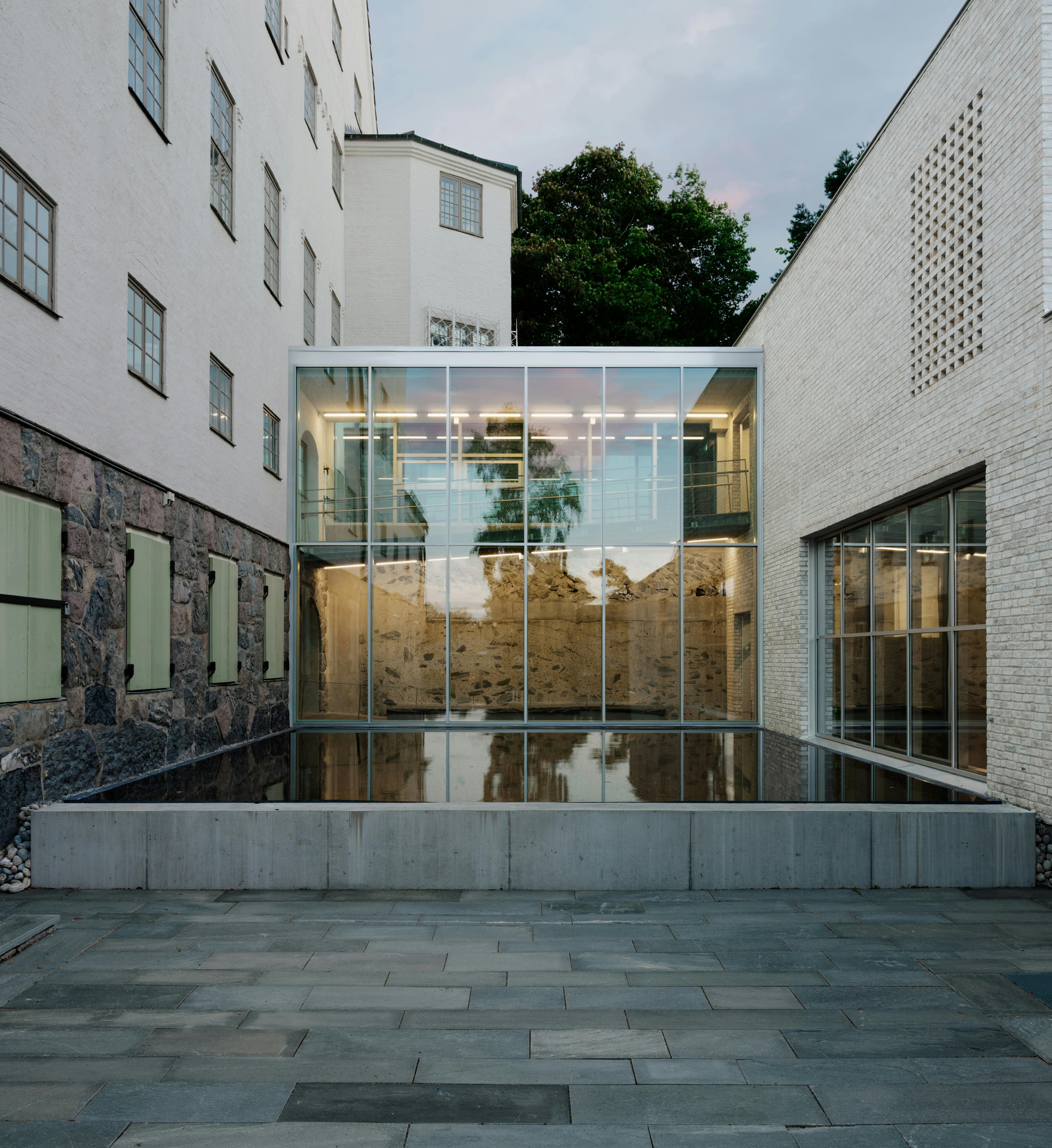
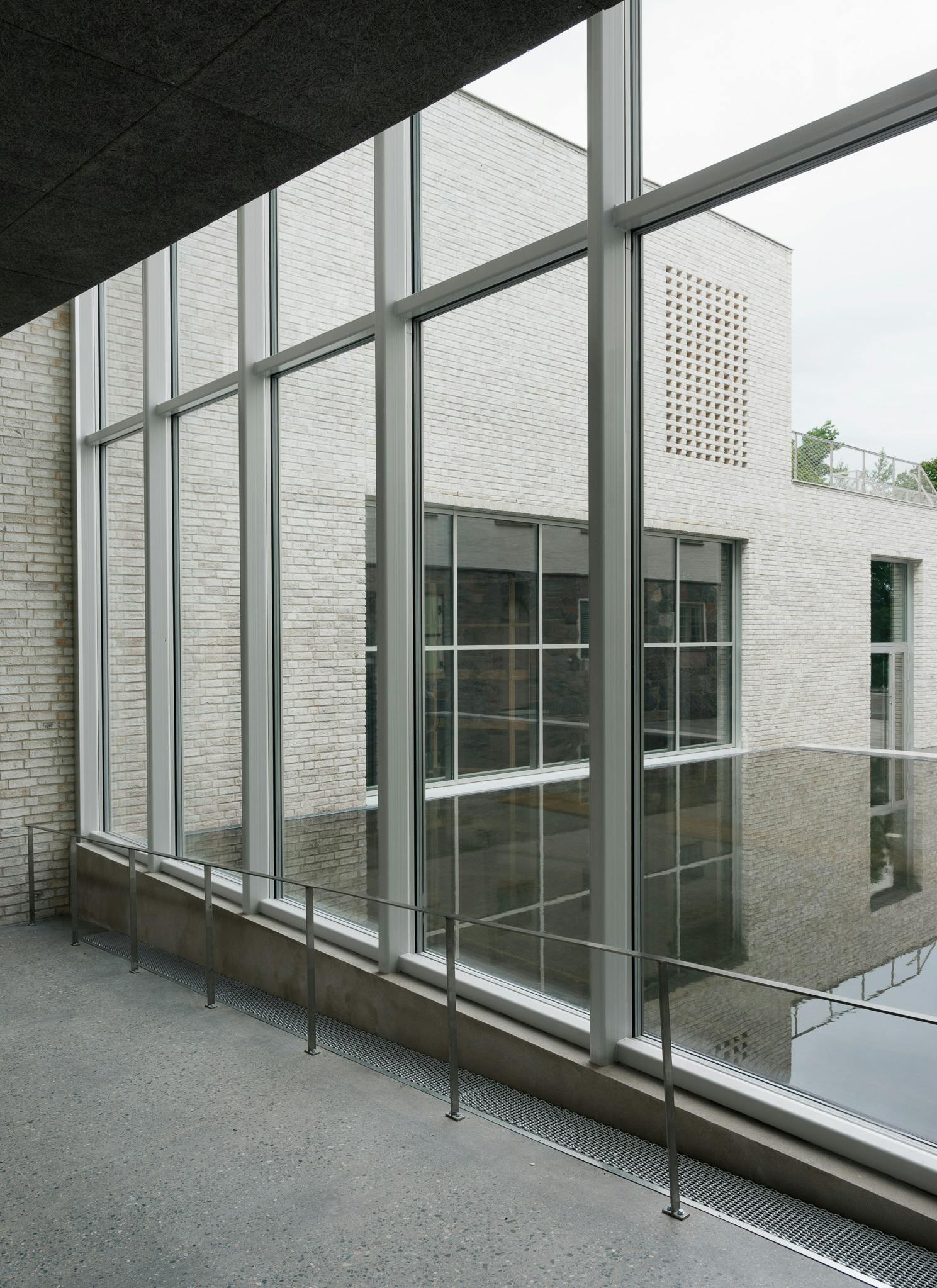
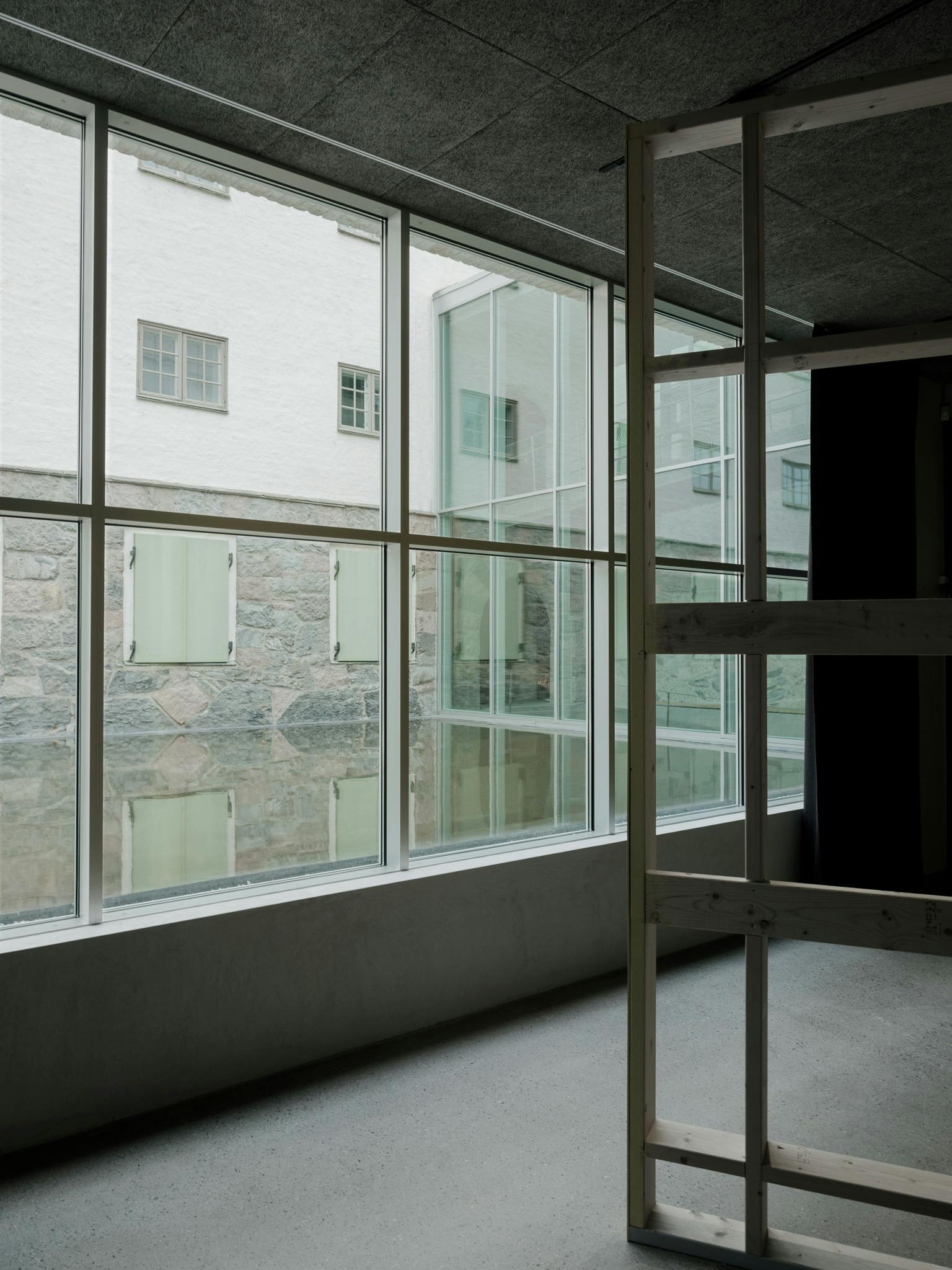
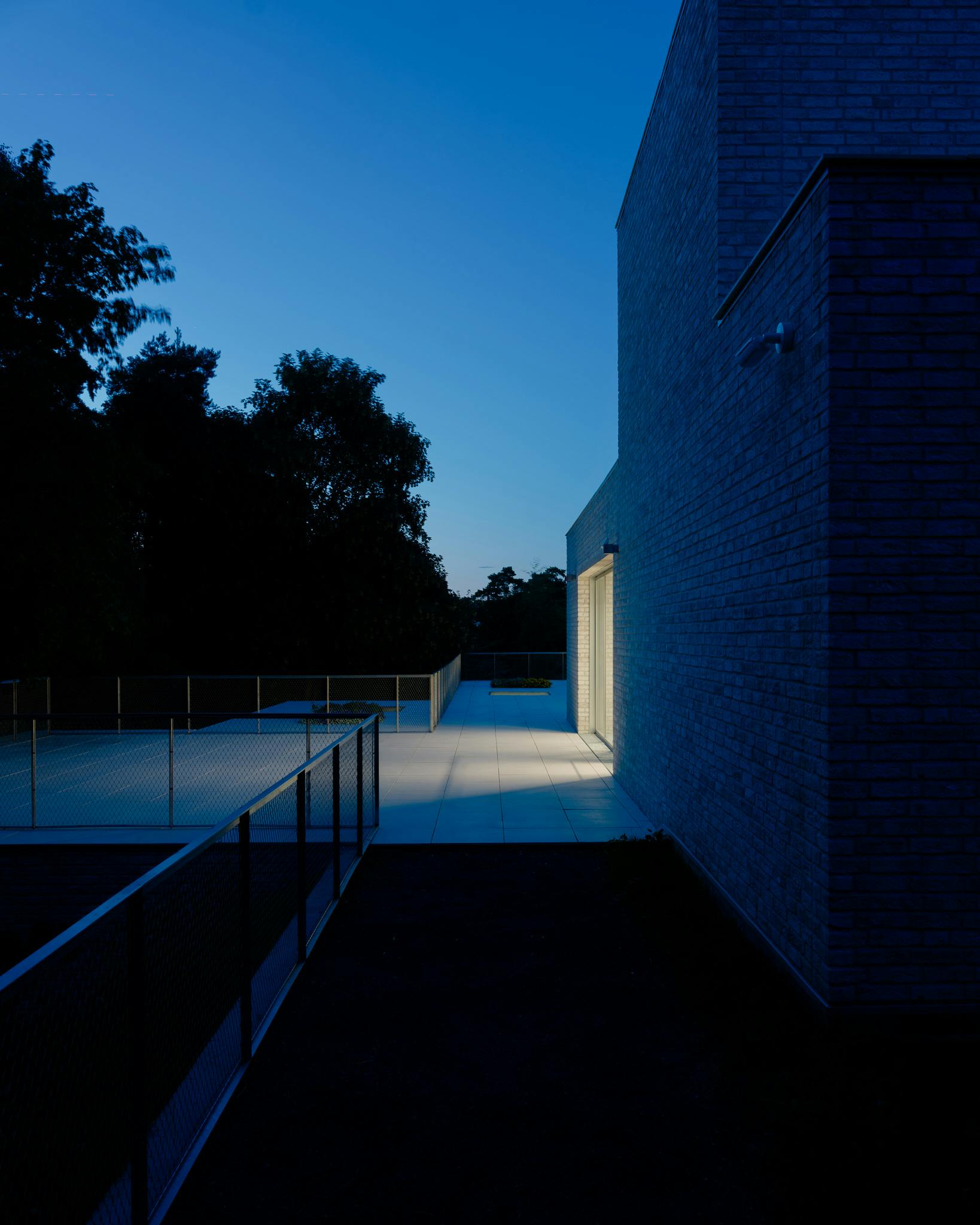
Type
Architecture
Client
Statsbygg
Date
2017 - 2021
Status
Completed
Project team
Peter Brekke Skråvik (project architect), Øystein Rø, Espen Røyseland, Joao Amaro, Maja Egge Sipus, Espen Heggertveit
Competition team
Øystein Rø, Espen Røyseland, Gauthier Durey, Håvard Skarstein, Fredrikke Frølich, Margrete Bjone Engelien, Erik Lyche Solheim, Are Hagen, Phoebe Chu
Collaborators
Lo: Le landskap og plan (LARK), Bollinger+Grohmann (RiB), P Nome AS (RiV), Norconsult (RiE), Fokus Rådgivning (RiBr)
Photo
Einar Aslaksen, Kyrre Sundal
Our proposal is a landscape integrated building in active dialogue with the historic Villa Grande, the garden and the surrounding nature. Mino complements the existing villa with a composition of lower brick volumes and openings which creates a new inner and outer movement through history and landscape. The extension contains exhibition rooms, a workshop and learning spaces.
In the transition between Villa Grande and Mino a contemplative space is created with a reflection pool. This is where the permanent and the temporary exhibition begins and ends, creating a new organizing space for the visitors. The underground bunker of Vidkun Quisling is also made visible in this room in form of a cross-section through the bunker construction. The roof of the exhibition area and the workshop becomes part of an extended garden which enables a continuous movement around Villa Grande, overlooking the surroundings.





